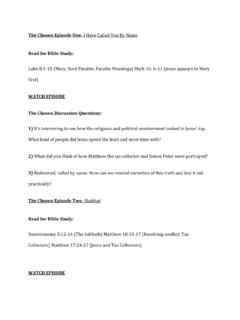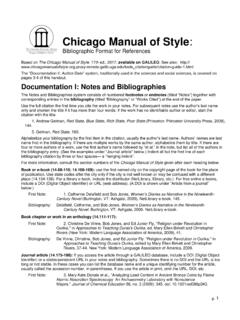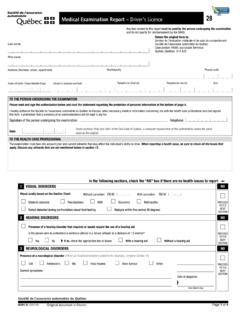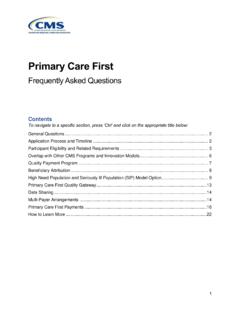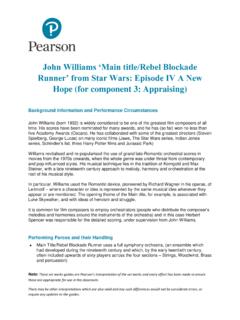Transcription of Wilderness Medicine Practice Test 2018 - NOLS
1 NOLS Wilderness Medicine NOLS Wilderness Medicine | 284 LINCOLN ST. LANDER, WY 82520, USA | | | WFR Practice Test 2018 Answers and rationale can be found at the end of the test. 1. Unusable athletic injuries are treated with: a. immobilization and evacuation b. high doses of NSAID (anti inflammatory) medications c. supporting tape wraps d. Ice and heat therapy 2. Certification as a Wilderness Medicine provider: a. indicates you have completed training b. allows you to administer medications to a patient c. prevents claims of negligence for your patient care d.
2 Gives you a license to Practice Medicine beyond urban training 3. Wilderness Medicine is different from urban Medicine because Wilderness Medicine has: a. extended patient contact time, environmental challenges and improvised gear b. the freedom to suture wounds and set fractures c. more than 30 minutes transport time to definitive care d. different hypothermia protocols 4. The most common injuries consistently reported on Wilderness expeditions are a. lower leg fractures b. shoulder dislocations c. soft tissue wounds d. open chest wounds 5. A patient in compensatory shock: a.
3 Should be treated with epinephrine by auto-injector b. is compensating for the injury and does not need treatment c. maintains adequate perfusion with vasoconstriction, increased HR and RR d. will have a slow HR and RR and altered mental status 6. Compartment syndrome is a. pressure in a muscle secondary to an injury b. managed with cool compresses and massage c. usually a geriatric problem d. primarily a pediatric problem NOLS Wilderness Medicine NOLS Wilderness Medicine | 284 LINCOLN ST. LANDER, WY 82520, USA | | | 7. A hypothermic patient a. loses most of their heat through their head b.
4 Can be treated with a hypothermia wrap c. is in a stable physiological state d. needs to exercise to generate heat 8. Your tent mate has accidentally swallowed a small amount of white gas. You recommend that she: a. drink lots of water b. attempt to vomit c. take an antihistamine d. call poison control 9. We guard against an allergic response to a medication by a. asking the patient if they have taken a medication previously b. first testing the patient with a half-dose of medication c. only administering medications if we have epinephrine available d. only administering non-prescription medications 10.
5 Treatment principles for snowblindness include a. warm compresses over the eyes b. non-caffeinated tea bags on the eyes c. topical eye antibiotic ointments d. cool compresses over the eyes 11. A pneumothorax is a. air in the chest b. air trapped in the aveoli c. air in the lungs d. air in the abdomen 12. Sunscreens a. prevent skin cancer b. should be applied several times a day c. allow us to forego hats and clothing d. allow for safe skin tanning NOLS Wilderness Medicine NOLS Wilderness Medicine | 284 LINCOLN ST. LANDER, WY 82520, USA | | | 13. Rapidly evacuate a patient with a headache if the headache a.
6 Is accompanied by nausea, vomiting or diarrhea b. is sudden, severe or is associated with altered mental status c. is associated with a low grade fever, malaise and muscle aches d. includes a sore throat and cough 14. Urinary tract infections a. can be accompanied by fever and blood in the urine b. are treated with aspirin c. usually resolve in 24 hours d. are more common in men 15. Your 54 year old co-instructor wakes up with chest pain and a sensation of tightness in his chest, shortness of breath, anxiety, nausea and pale cool, clammy skin. Your treatment plan includes a.
7 Walking to the nearest evacuation point b. withholding further medications c. suggesting he take one adult aspirin d. treating with your personal nitroglycerin 16. Which of the following statements about exercise in hot conditions is false? a. alcohol, antihistamines, anti depressants and amphetamines can contribute to heat illness b. heat illness can be the result of cumulative exposure over several days c. acclimatization to heat is recommended d. over hydration can prevent heat illness 17. The head-to-toe physical exam a. is not done on medical patients b. is a skill reserved for physicians and nurses c.
8 Is focused on obvious injuries d. is done on all patients 18. In the Wilderness we can stop CPR if: a. the patient s pulse returns b. it doesn t work after 15 minutes c. the patient has been struck by lightning d. the patient has a history of heart disease NOLS Wilderness Medicine NOLS Wilderness Medicine | 284 LINCOLN ST. LANDER, WY 82520, USA | | | 19. Abandonment occurs when: a. your patient care is less than the expected standard based on your training b. you share patient information with another medical provider c. you turn over patient care to a person with higher medical training d.
9 You turn over patient care to a person unable to manage the patient 20. To effectively make water safe to drink it needs to a. be warm, but not boil b. boil for 10 minutes c. be hot enough to generate bubbles d. be hot enough for a rolling boil 21. In a hydrated person urine is commonly a. produced once a day b. light yellow or clear c. dark and smelly d. light red 22. Recommended treatments for pit viper bites include: a. suction devices to withdraw venom b. using a tourniquet to isolate the venom in the extremity c. applying cold to prevent venom absorption d.
10 Transporting the victim to the hospital for antivenom 23. A patient with a fever that is greater than 102F (39C) or that persists for 48 hours should be a. evacuated to definitive care b. treated with cold water gargles c. closely observed for white patches d. treated with warm green tea gargles 24. When we check the pelvis in the head-to-toe exam we a. press in, then down on the iliac crests b. log roll the patient to assess stability c. lift the hips to assess range of motion d. press in on the iliac crests. NOLS Wilderness Medicine NOLS Wilderness Medicine | 284 LINCOLN ST.
